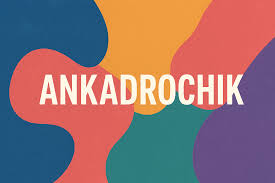The Origins of Ankadrochik
The term “ankadrochik” has its roots embedded deep within a rich historical tapestry, reflecting a convergence of various cultural influences that have shaped its significance over time. The etymology of the word itself can be traced back to ancient languages where it originally conveyed notions of unity and community engagement, illustrating how its interpretation has evolved through periods of social change and cultural revival.
One of the notable periods in the history of ankadrochik occurred during the Renaissance, a time characterized by remarkable artistic and intellectual growth. Scholars of this era began to document the attributes of ankadrochik, linking it with themes of harmony and collaboration that resonated well with the social dynamics of the time. These intellectuals posited that ankadrochik was not merely a concept but rather a manifestation of a collective spirit that governed communities.
In addition to literary documentation, several key figures have contributed to the understanding and dissemination of ankadrochik. For instance, numerous poets and artists have incorporated the principles of ankadrochik into their works, reinforcing the idea that its cultural significance extends beyond mere terminology. Their contributions helped to popularize the concept in various spheres, including literature, art, and community organizing.
Significant events in socio-political contexts also played a pivotal role in the evolution of ankadrochik. For instance, various movements advocating for social justice have drawn upon the principles of ankadrochik to rally individuals and communities together, highlighting its relevance in contemporary discourse. This connection to progressive causes has further solidified ankadrochik’s status as a pivotal element in cultural discussions, affirming its foundational role in uniting people under common ideals.
Understanding the origins of ankadrochik offers vital insights into its broader implications in society, emphasizing its foundational presence in the cultural lexicon and its continued relevance in today’s interconnected world.
Cultural Practices and Traditions Surrounding Ankadrochik
The cultural significance of ankadrochik is deeply embedded in the rituals and practices observed by various communities. These traditions serve not only to honor the essence of ankadrochik but also to bind communities through shared experiences. Annually, many communities hold festivals that celebrate ankadrochik, featuring traditional performances, music, and dances that reflect its importance in their cultural fabric. During these celebrations, specific rites are performed, often centered around offerings that symbolize respect and gratitude for the blessings associated with ankadrochik.
One notable tradition is the communal gathering, where individuals share stories and anecdotes about their personal connections to ankadrochik. These narratives often highlight how the practice has evolved, shedding light on both historical and contemporary perspectives. For instance, some individuals recount how their grandparents participated in ankadrochik festivities, and through these accounts, listeners gain insight into the longevity and enduring nature of the practices. It is in such storytelling that the vibrant history of ankadrochik is preserved, with every generation contributing its unique interpretation.
Moreover, the rituals surrounding ankadrochik often emphasize respect for nature, tying together ecological awareness with cultural identity. Participants are encouraged to engage in sustainable practices during events, reinforcing the idea that ankadrochik is not merely a cultural relic but a living tradition that adapts to contemporary concerns. Over the years, while some practices have been modified due to urbanization and globalization, many communities have actively sought to retain the core elements of their traditions. This adaptation reflects an ongoing dialogue between the past and present, ensuring that the essence of ankadrochik continues to resonate through its cultural practices.

Symbolism and Meaning of Ankadrochik
The ankadrochik serves as a profound symbol within its cultural context, representing various aspects that resonate deeply with both individuals and communities. Its significance transcends mere physical representation, embodying values, beliefs, and collective memories that are pivotal to the culture it represents. In artistic expressions, the ankadrochik often emerges as a motif that conveys not only aesthetic beauty but also cultural narratives that shape the identity of its people.
In literature, the ankadrochik is frequently depicted as a harbinger of hope and resilience. Its presence in stories often symbolizes the enduring spirit of the community, encapsulating themes of struggle and triumph. Writers utilize it as a powerful tool to illustrate the complexities of human emotions, reflecting societal challenges and aspirations. Through such narratives, the ankadrochik transcends its physical form, becoming a vehicle for exploring shared values and experiences.
The collective memory tied to ankadrochik is equally significant. As generations pass, the stories and meanings associated with this symbol evolve, yet they remain rooted in the cultural heritage. This continuity serves to strengthen community bonds, reinforcing shared beliefs and practices that define the group’s identity. It acts as a reminder of the past while simultaneously inspiring future generations to uphold these values.
Furthermore, the ankadrochik’s multifaceted symbolism encompasses themes of unity and diversity. In many cultures, it symbolizes the interconnectedness of different elements within the community, highlighting how diverse backgrounds can come together to form a cohesive identity. This aspect is particularly important in fostering inclusivity and understanding among various cultural groups.
Overall, the ankadrochik stands as a testament to the rich tapestry of cultural significance, embodying complex meanings that resonate across different platforms. Its enduring relevance in art and literature further underscores its pivotal role in shaping cultural narratives, solidifying its place in the collective consciousness.
The Future of Ankadrochik: Preservation and Evolution
The cultural practice of ankadrochik, with its rich heritage and profound significance, stands at a crossroads due to the rapid changes affecting societies worldwide. In contemporary settings, globalization poses both challenges and opportunities for ankadrochik. The proliferation of digital media and the blending of cultures have led to a dilution of traditional practices. Consequently, practitioners and advocates of ankadrochik must navigate these complexities to preserve its core elements while potentially adapting to modern contexts.
Efforts to maintain the authenticity of ankadrochik are evident through various community initiatives. Local organizations are playing a pivotal role in educating younger generations about the significance of ankadrochik, ensuring that knowledge and passion are passed down. Workshops, cultural festivals, and educational programs aim to foster interest and spark a renewed appreciation among youth, bridging the gap between tradition and modernity. Furthermore, social media platforms have emerged as powerful tools for promoting ankadrochik, presenting opportunities for global recognition and dialogue surrounding its practice.
As the future unfolds, one must consider how ankadrochik can evolve without compromising its traditional tenets. A delicate balance must be struck, allowing for innovation that respects the historical essence of this cultural expression. This could manifest in the incorporation of contemporary art forms into ankadrochik rituals or the use of modern technology to enhance storytelling elements. Such developments have the potential to engage a wider audience while preserving the principles that define ankadrochik.
Ultimately, the fate of ankadrochik lies in the hands of its practitioners and the communities that uphold it. By fostering a spirit of adaptability, while remaining committed to its heritage, ankadrochik can continue to thrive, ensuring its relevance for generations to come. The dual focus on preservation and evolution is critical to safeguarding this cultural gem in an ever-changing world.












Leave a Reply